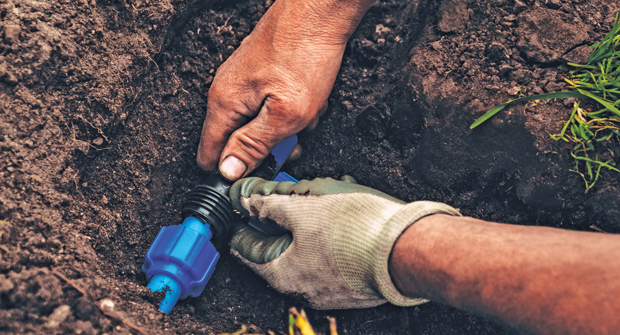By: Andy Smith, CIC, CID, CLIA
Regardless of anyone’s belief, the same amount of water exists in earth’s atmosphere as did at the time of the planet’s creation. As growth and development occur and populations expand, we are faced with the dilemma of making sure there is enough water available to fulfill the needs of drinking, cooking, crops and sanitation. Our society is experiencing heightened sensitivity to the problems caused by examples of water waste.
The landscape industry is the subject of heightened scrutiny because of the visibility of the irrigated landscape. I don’t know anyone who sets out to apply water to their landscape with the goal of wasting water, yet everyone seems to agree there is much room for improvement in overall landscape water use efficiency. At the residential level this becomes an even greater challenge because of the disconnected and decentralized nature of irrigation system operators, homeowners.
We ask the Pros
In a recent survey of broad cross-section of irrigation professionals, participants were asked, “What is the single greatest barrier to residential landscape water use efficiency?” 63% indicated apathy/ignorance as the prime roadblock, 18% said water cost, 13% said system design and 4% indicated system disrepair as the problem.
Interestingly, not one person from this group saw lack of technology adoption (smart controllers, sensors, etc.) as the problem. This is very interesting in light of the fact that many of the programs and policies aimed at curtailing residential landscape water waste seem to focus on measures that foster technology adoption. It seems there has been a misunderstanding somewhere along the line.
Where to start?
If apathy and/or ignorance truly are a primary barrier, then we need to work harder to create sensitivity to the negative impacts of landscape water waste. Of course creating such sensitivity can be accomplished in a variety of ways, but many of the survey responses indicated the best way to win the battle is via price. In other words, if people waste water, in ought to be expensive. The goal in deploying a price signal strategy is to make such policy equitable so that the resulting strategy not only penalizes waste, it rewards efficiency.
We can talk till we are blue in the face about plant health, the impact of runoff and strain on resources, but those factors by themselves are far less compelling without economic connections that reward efficiency. (More on this next month) I believe this is an area the landscape industry needs to monitor and develop positions for advocacy.
The ROI challenge
I have visited with many landscape and irrigation professionals in my career. Oftentimes I have inquired as to why someone may have skimped on a design, omitted a rain sensor or ignored a small leak. The most common answer, “The customer won’t pay for it and I will price myself out of the job.”
As the cost of wasting water increases, solutions of proper design, system repair/maintenance and technology application begin to shine. The cost of water will continue to rise, but I believe the cost of wasting water should and will increase disproportionately. Understanding the economics of irrigation system water use will become a fundamental driver in improving landscape water use efficiency and will thereby open the door to improved design, installation, operation and technology deployment. This means opportunity for the industry.
Next month: Identifying the key components of a water price signal strategy

